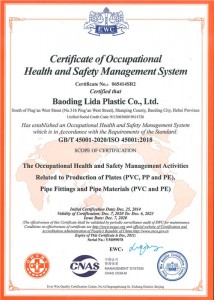Jul . 26, 2024 13:22 Back to list
Exploring the Density Properties of HDPE Sheets for Various Applications and Uses
Understanding HDPE Sheet Density
High-Density Polyethylene (HDPE) is one of the most commonly used plastic materials in various industrial and consumer applications. Known for its high strength-to-density ratio, HDPE is a versatile thermoplastic that excels in durability, chemical resistance, and stability. Among the many attributes of HDPE, its density plays a crucial role in determining its suitability for different applications. In this article, we will explore the significance of HDPE sheet density and how it impacts the material’s performance and applications.
What is HDPE?
HDPE is a polyethylene thermoplastic made from petroleum. It is characterized by its high density due to the arrangement of its polymer chains, which are tightly packed. This structural configuration imparts HDPE with enhanced strength, making it resistant to impact, moisture, and a variety of chemicals. Furthermore, HDPE is lightweight, which makes it easy to handle and transport, but its density can vary depending on the specific formulation, processing method, and processing temperature.
Density of HDPE
The density of HDPE typically ranges from 0.93 to 0.97 grams per cubic centimeter (g/cm³). This relatively high density compared to other forms of polyethylene, such as Low-Density Polyethylene (LDPE), is what gives HDPE its superior mechanical properties. The exact density can be influenced by various factors, including the manufacturing process, additives, and even the molecular weight of the polymer involved.
Importance of HDPE Sheet Density
The density of HDPE sheets is a fundamental property that affects their mechanical strength, durability, and buoyancy. Here are some reasons why understanding HDPE sheet density is essential
hdpe sheet density

1. Mechanical Properties Higher density in HDPE usually correlates with increased tensile strength and rigidity, which is critical for applications requiring structural integrity. For instance, in construction, HDPE sheets with optimal density can be used for products like pipes and containers that are intended to withstand heavy loads.
2. Applications Varying densities of HDPE are suitable for different applications. For example, denser HDPE is frequently preferred for applications requiring high durability, such as industrial storage tanks and packaging materials, while less dense formulations may be used for more flexible applications, such as liners and membranes.
3. Weight and Transport The lightweight nature of HDPE allows for cost-effective transportation and handling. By understanding the density of HDPE sheets, designers and manufacturers can create products that meet specific weight requirements for ease of handling or shipping.
4. Compatibility with Other Materials The density of HDPE can also impact its compatibility with other materials, particularly in composite applications. Knowing the density can help engineers make informed decisions about the best additives or fillers to combine with HDPE for enhanced performance.
5. Environmental Considerations The use of HDPE is often considered more environmentally friendly than other plastic materials due to its recyclability. Understanding the density contributes to effective recycling processes, as the separation and processing of materials can be optimized based on their physical properties.
Conclusion
In summary, the density of HDPE sheets is a vital property that influences their mechanical performance, application suitability, and environmental impact. As industries continue to seek high-performance materials that are lightweight and durable, HDPE remains a popular choice across various sectors. By understanding and leveraging the unique attributes associated with HDPE density, manufacturers can enhance product design and performance, leading to innovations in multiple applications. Whether in packaging, construction, or environmental management, HDPE's attributes ensure its place in the future of materials engineering.
-
HDPE Pipe Fittings: Durable, Leak-Proof Solutions
NewsAug.16,2025
-
Premium CPVC Sheet: High-Temp & Chemical Resistant Solutions
NewsAug.15,2025
-
Durable PPR Pipe for Hot & Cold Water Systems - Easy Install
NewsAug.14,2025
-
Durable HDPE Sheet | Versatile & Impact-Resistant Plastic
NewsAug.13,2025
-
Premium PVC Soft Sheets: Clear, Flexible & Durable
NewsAug.12,2025
-
Premium PVC Round Rods: Durable, Chemical Resistant, Easy to Machine
NewsAug.11,2025

